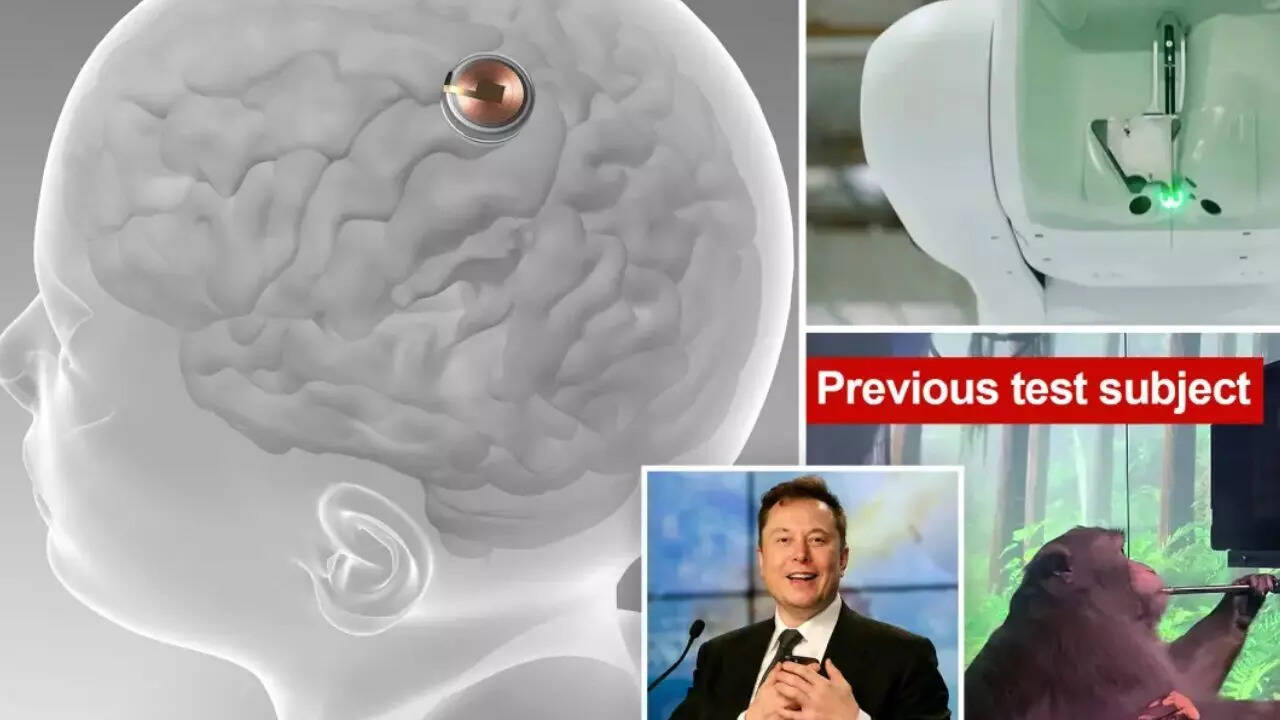Elon Musk’s Neuralink brain chip: What is it, how it helps paralysed patients and aims to merge humans with AI |

Elon Musk’s Neuralink is revolutionising the way humans interact with technology by merging the power of thought with advanced computing. Its flagship innovation, a coin-sized brain implant called “the Link,” enables individuals to control computers, smartphones, and even games just by thinking. The implant has already transformed lives, helping paralysed patients regain digital independence and communication ability. Early recipients like Noland Arbaugh, Audrey Crews, Alex, and RJ showcase how neural signals can bypass damaged pathways to restore essential functions. Beyond assisting people with disabilities, Neuralink envisions a future where humans could communicate brain-to-brain, boost memory, and even merge with artificial intelligence. However, this pioneering technology also faces significant challenges, including complex surgeries, device reliability, and ethical concerns over neural privacy and long-term brain safety. Check how Neuralink works, the individuals already benefiting from it, and how it could change the future of humanity.
What is Neuralink? Inside Elon Musk’s brain chip technology
The Neuralink Link is a brain-computer interface (BCI) designed to record and interpret neural signals. It is implanted directly into the skull, with ultra-thin electrode threads (thinner than human hair) extending into the brain’s motor cortex. These electrodes detect and interpret neural impulses associated with movement and thought processes. Once processed, the data is transmitted wirelessly to external devices like computers, tablets, and prosthetics, effectively allowing users to control technology with their minds. The implant charges wirelessly, ensuring convenience and continuous operation.

How Neuralink works
A specialized surgical robot performs the implant procedure to ensure precision. The robot delicately inserts up to 1,024 flexible electrodes into specific brain regions without damaging nearby blood vessels or tissue.The electrodes pick up tiny electrical impulses generated when the user thinks about performing specific actions, such as moving a cursor, selecting text, or clicking on applications.
- Data processing and transmission
The neural signals are amplified, digitized, and processed by the implant’s internal electronics. These processed signals are transmitted wirelessly to a receiver (a tablet or computer), converting thoughts into actionable commands.Neuralink’s software uses machine learning to adapt to each user’s unique neural patterns. Over time, accuracy improves, reducing errors and allowing faster digital control.
Neuralink human trials reveal stunning breakthroughs for paralysed patients

Source: New York Post
Noland, paralysed from the shoulders down since a 2016 diving accident, became the first human Neuralink recipient in early 2024. The implant allowed him to play online chess, browse the internet, and use his laptop entirely via thought. Although some electrode threads retracted initially, software upgrades restored functionality, demonstrating Neuralink’s ability to adapt to real-world challenges.
- Alex – Creativity unlocked
The second recipient, known as Alex (pseudonym), used the implant for advanced digital tasks, including 3D modeling, digital art, and gaming. This success showed the device’s potential beyond basic computer use, extending into professional and creative industries.
- Audrey Crews – The first female participant
Paralyzed for over two decades, Audrey Crews became the first publicly identified female Neuralink recipient in mid-2025. She regained the ability to digitally sign her name and play interactive games for the first time in years. Her experience proved Neuralink’s adaptability for different patient profiles.
- RJ – A Veteran’s Independence restored
RJ, a US military veteran, used Neuralink to control his smartphone and computer, enabling easier communication and daily digital tasks. His case highlighted Neuralink’s potential in helping injured service members regain independence.
- Other participants (P6–P9+)
By late 2025, at least nine people had received the implant as part of the PRIME clinical trial in the US and U.K. Though many remain anonymous, early reports confirmed that participants successfully executed binary commands and navigation tasks using only their thoughts.
Neuralink future goals expand beyond medical applications
While Neuralink’s initial focus is medical restoring communication and independence for people with paralysis it has long-term ambitions that include:
- Memory enhancement: Storing and recalling digital memories directly from the brain.
- Brain-to-brain communication: Enabling direct mental communication between humans.
- Integration with AI: Allowing humans to interface with artificial intelligence for faster learning and cognitive enhancement.
`
Neuralink’s ethical and safety challenges
The technology raises important questions:
- Privacy: Who controls neural data?
- Long-term health: What are the risks of chronic electrode implantation?
- Social impact: Could BCIs create inequality between enhanced and non-enhanced humans?
Neuralink’s research emphasises incremental progress, regulatory compliance, and patient safety, understanding that merging the human brain with machines requires caution as well as innovation.Also Read | Who is Arvinder Singh Bahal? The 80-year-old adventurer flying to space on Jeff Bezos’ Blue Origin mission




